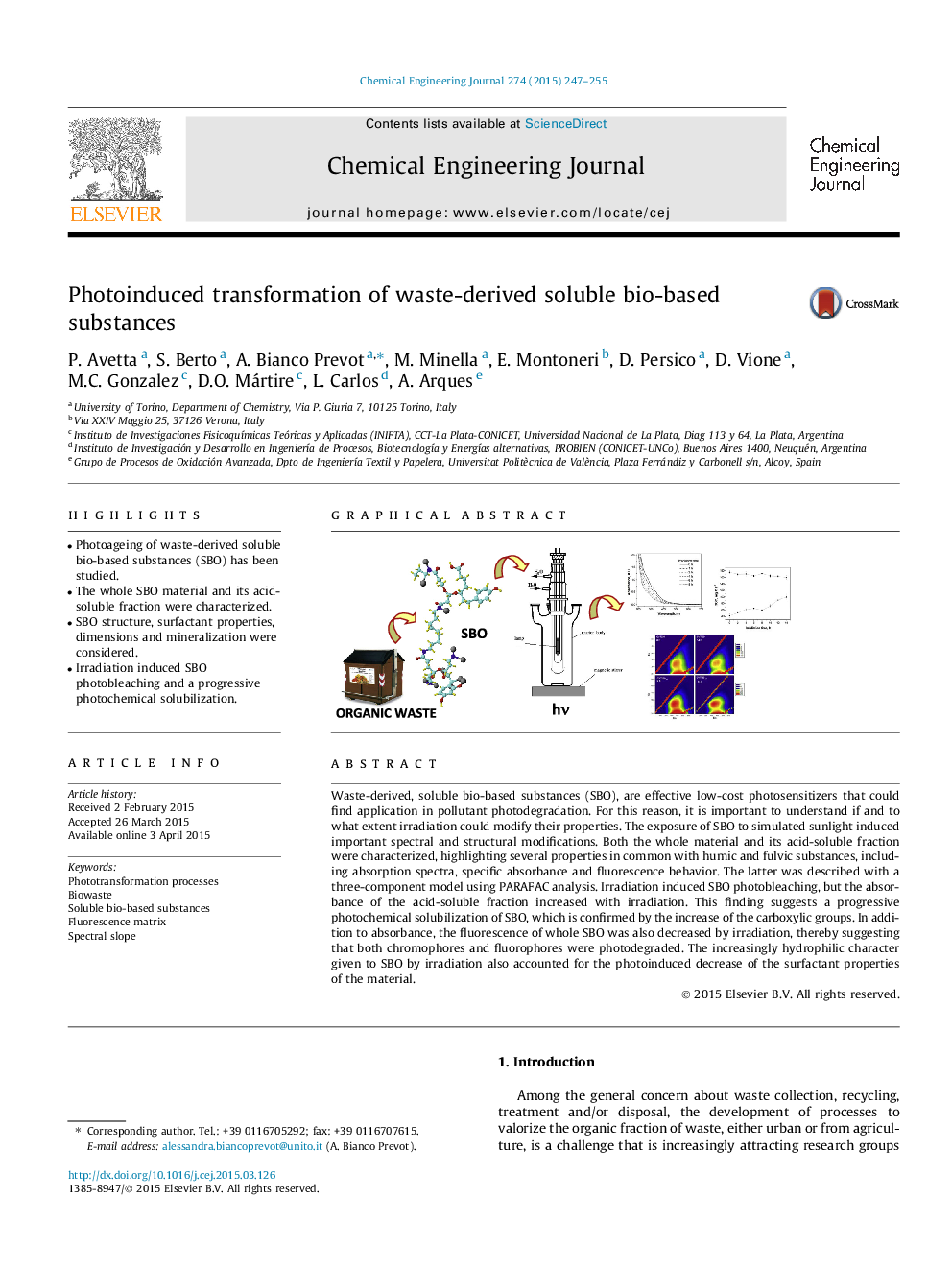| Article ID | Journal | Published Year | Pages | File Type |
|---|---|---|---|---|
| 146395 | Chemical Engineering Journal | 2015 | 9 Pages |
•Photoageing of waste-derived soluble bio-based substances (SBO) has been studied.•The whole SBO material and its acid-soluble fraction were characterized.•SBO structure, surfactant properties, dimensions and mineralization were considered.•Irradiation induced SBO photobleaching and a progressive photochemical solubilization.
Waste-derived, soluble bio-based substances (SBO), are effective low-cost photosensitizers that could find application in pollutant photodegradation. For this reason, it is important to understand if and to what extent irradiation could modify their properties. The exposure of SBO to simulated sunlight induced important spectral and structural modifications. Both the whole material and its acid-soluble fraction were characterized, highlighting several properties in common with humic and fulvic substances, including absorption spectra, specific absorbance and fluorescence behavior. The latter was described with a three-component model using PARAFAC analysis. Irradiation induced SBO photobleaching, but the absorbance of the acid-soluble fraction increased with irradiation. This finding suggests a progressive photochemical solubilization of SBO, which is confirmed by the increase of the carboxylic groups. In addition to absorbance, the fluorescence of whole SBO was also decreased by irradiation, thereby suggesting that both chromophores and fluorophores were photodegraded. The increasingly hydrophilic character given to SBO by irradiation also accounted for the photoinduced decrease of the surfactant properties of the material.
Graphical abstractFigure optionsDownload full-size imageDownload as PowerPoint slide
